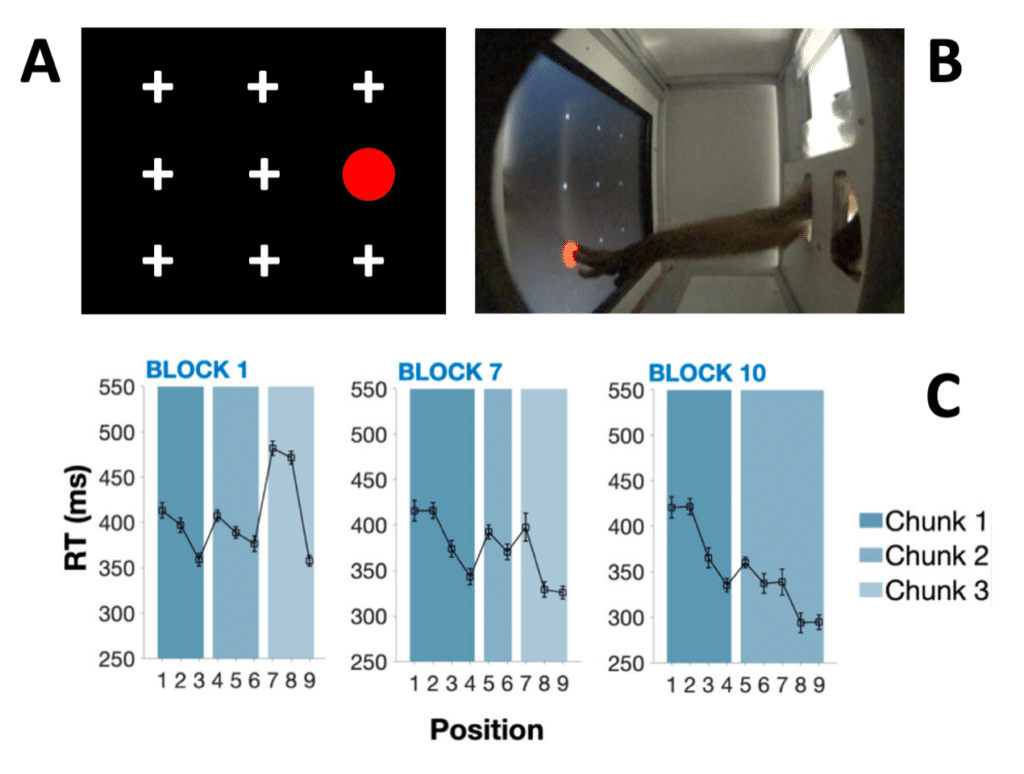
Baboons are invited to learn sequences by pointing to a red target circle appearing on a touch screen (Panels A and B). Once the target is touched, it moves to a different position. Baboons repeatedly produce the same sequence of 9 touches for 1000 trials, which are then analyzed as 10 consecutive blocks of 100 trials. Panel C shows mean response times for each position in the sequence in blocks 1, 7, and 10, for one baboon. The sequence is processed in 3 chunks in Block 1 and only 2 in Block 10. Among other results, chunks become fewer and longer with practice.
Tosatto, L., Fagot, J., Nemeth, D., & Rey, A. (2022). The evolution of chunks in sequence learning. Cognitive Science. 46(4), e13124. @HAL
